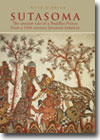| Our Publications | ||
| Books by Title | ||
| Books by Author | ||
| Books by Country | ||
| E-books | ||
| About | ||
| Orchid Press E-books | ||
| Distributed E-books | ||
| Our Bookshop | ||
| About Us | ||
| Browse Shop | ||
| How to Buy | ||
| Contact Us | ||
| WE BUY BOOKS AND LIBRARIES | ||
|
||
Book Reviews

Sutasoma:
The ancient tale of a Buddha-Prince from a 14th century Javanese kakawin
Translated with commentary by
Kate O’Brien
2008, 294 pp., 22 col. plates & 9 figures, index, 24.5 x 17.5 cm., hardcover.
ISBN-10: 974-524-107-5 $45.00
ISBN-13: 978-974-524-107-7
Book review by Thomas M. Hunter (Universitas Udayana)
(Indonesian and Malaysian Affairs, vol. 43, no. 1 (2009), pp. 255-7)
The publication of Kate O’Brien’s translation and study of the Sutasoma brings to the reading public a careful and finely crafted translation of this work of the classical tradition of pre-modern Java. At the same time it represents a challenging and much-needed approach to the study of Tantric Buddhism as it was known and practised in fourteenth century East Java, based on a comparison of the Sutasoma with didactic texts of the Old Javanese tradition and with the traditions of Tantric Buddhism that are most prominently represented in the Tibetan tradition.
The translation itself centres around the career of Prince Sutasoma, who follows the pattern of Gautama Buddha in turning away from kingship to seek the path of renunciation. This involves Sutasoma’s meetings with an elephant-headed demon, a giant serpent, and a tigress, and his conversion of each of these threatening figures to the path of non-violence. Sutasoma’s lectures to these three figures are used as a vehicle to demonstrate the equivalence of the Buddhist and Śaivite doctrines of the time of Mpu Tantular, but at the same time the superiority of the Buddhist path in its development of the doctrine of ‘non-dual spiritual knowledge’ (adwaya-jñāna) and the practice of the ‘yoga of non-duality’ (adwaya-yoga) that leads away from the potential temptations represented by the ‘supernatural powers’ (siddha) of the Śaivite path. As a result of these encounters Sutasoma recognizes his identity as Mahāvairocana, the central figure in Tantric Buddhist mandalas of the ‘diamond world’ (vajradhātu). This brings with it the recognition of his duty as a world-saviour to return to the path of kingship and to seek an alliance in marriage with a worldly queen who represents Locanā, the consort of Mahāvairocana in the diamond world. The remainder of the narrative is taken up with elaborate depictions of his marriage to Chandrawatī on a magical island that O’Brien reads as a mandala representing the ‘transcendent bliss’ that results from the unification of the principles of Wisdom (prajñā) and Means (upaya), and an equally elaborate rendering of the climactic battle between Sutasoma and the man-eating demon Porusāda that proves disastrous for the forces opposing the demon until Sutasoma manifests his transcendent, all-pacifying nature as Mahāvairocana.
In addition to expertly rendering this fascinating tale in English, O’Brien has embarked on a comparative study that attempts to situate the Sutasoma within the context of Tantric Buddhist doctrines of the ‘Supreme Yoga’ (anuttara-yoga) type. This is by no means an easy task, since it necessarily involves a thorough understanding of the history of Tantric Buddhist doctrine, especially as we know it from the Tibetan tradition, as well as a fine-tuned understanding of the literary and politico-religious history of East Java in the first half of the second millennium CE. It is to O’Brien’s credit that she notes that her findings at this point must be considered provisional, for despite great advances in the study of Tantric Buddhism in the last several decades, the question of how particular works fit into a long history of development, that is often presented in synchronic terms within the tradition, renders every analysis difficult. Not all readers will find convincing O’Brien’s exposition of the three encounters section of the Sutasoma as a mandala, since by her own admission her analysis entails a reversal of direction in the progress through the mandala that runs counter to normal practice, though is not outside the realm of possibility. Resemblances of the ‘jewelled island’ where Sutasoma and Candrawatī celebrate their wedding to a mandala are more convincing, as are O’Brien’s attempts to demonstrate links between the narrativisation of Buddhist doctrine in the Sutasoma with didactic texts like the Sang Hyang Kamahāyānan and Sang Hyang Kamahāyānikan. Nor will all readers be convinced that the Sutasoma is meant as a literal portrayal of Kṛtanagara, the Singhasari king (reigned about 1268–1292 CE) who was posthumously deified as ‘the deity combining Śiva and Buddha’, though to be sure the career of Krtanagara cast long shadows over the beliefs and practices of East Java in the following two centuries. But a perfect agreement with all that O’Brien proposes is perhaps not central to a judgment of this ground-breaking work. What is important is that O’Brien has raised the important questions and set forward an approach to their solution that is valuable both in terms of her conclusions and the challenges for further study that will undoubtedly grow out of her work. O’Brien has in this given us more than a translation; she has opened up a field of study that for too long has lain dormant, awaiting an awakening akin to that sought for—and perhaps achieved—in the literary efforts of masters of the Old Javanese tradition like Mpu Tantular.
Read a review from TAASA [More Orchid Press Reviews]
PO Box 70, Trinity TB, NL, A0C 2S0, Canada
Telephone: +1 709-330-4703